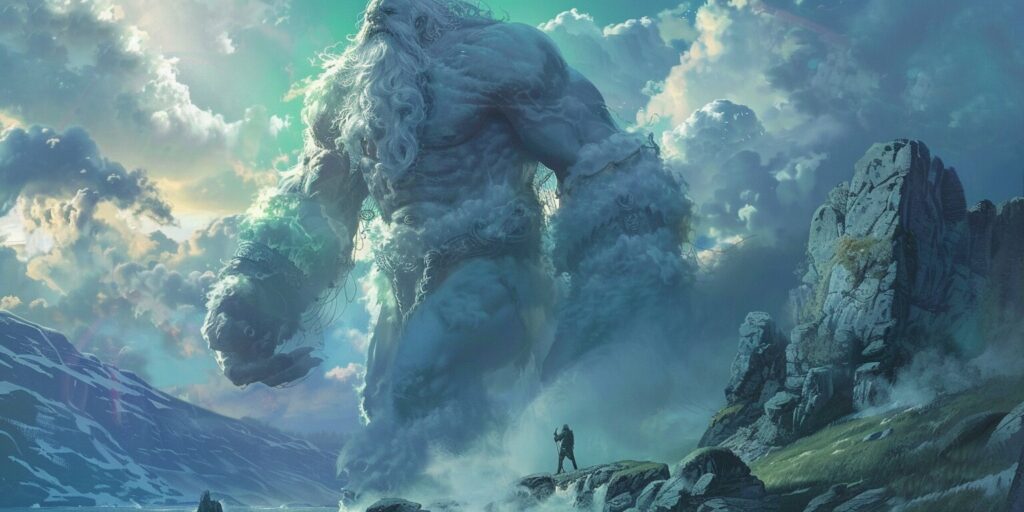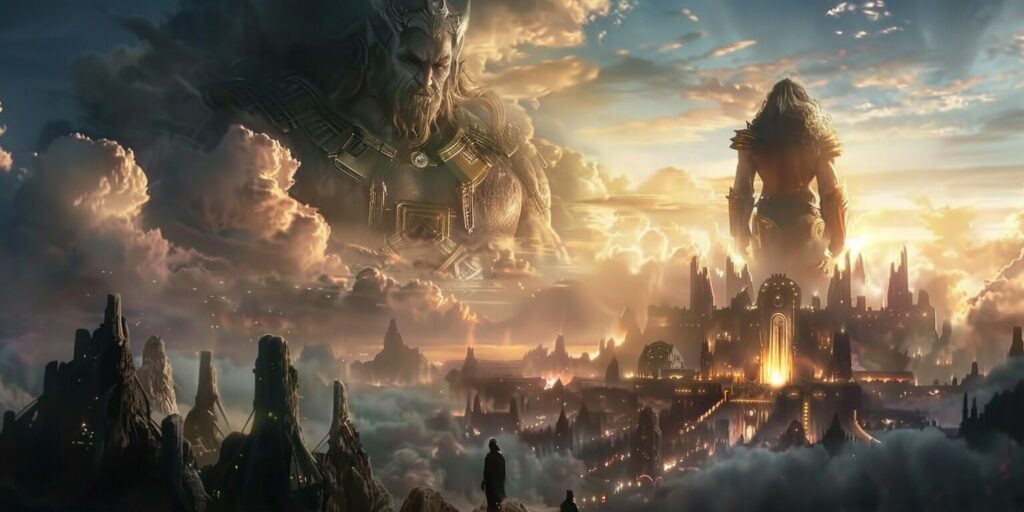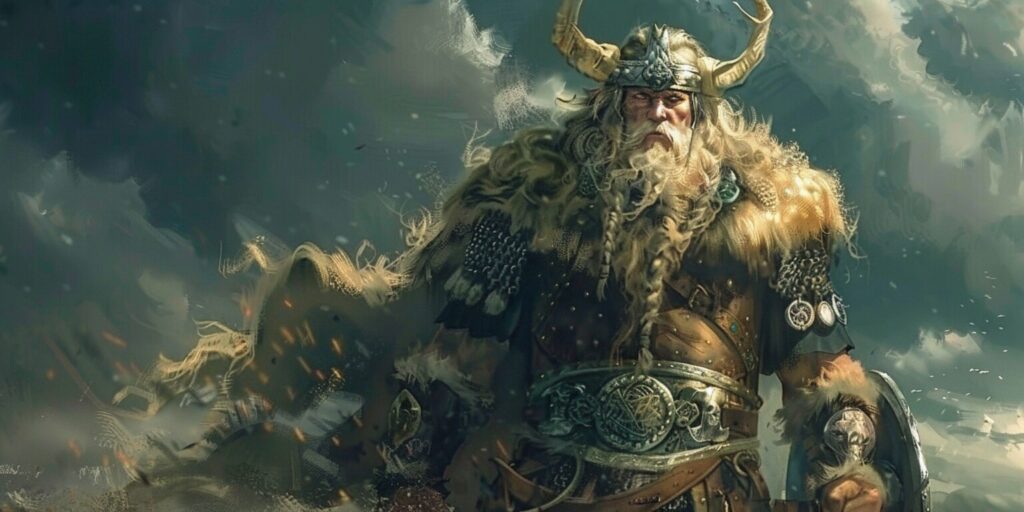Aesir Gods, Norse Gods, Norse Mythology, Odin, Yggdrasil (World Tree), Ymir
Divine Births: The Origins of Norse Gods in Mythology
Welcome to the captivating world of Norse mythology, where gods and goddesses reign supreme and fantastical tales of creation and divine births unfold. In ancient Norse tradition, the origins of the gods are shrouded in mystery and myth. These fascinating stories have been passed down through generations, preserving the rich tapestry of Norse tradition.
One of the key figures in Norse mythology is Ymir, the primordial giant whose body became the foundation of the world, a tale central to the Norse myth of creation. Another prominent figure is Odin, the chief god, and his intriguing role in the creation myth. These tales and more are meticulously preserved in the Prose Edda, written by the renowned Icelandic scholar Snorri Sturluson.
Join us as we explore how were the norse gods born, the divine births that shaped their existence, including the story of Bestla and Borr, and the influence of Norse mythology, which continues reverberating through contemporary culture. Delve into the cosmic elements, the realms of Asgard and the Aesir deities, and the significance of Yggdrasil, the majestic World Tree. Let’s embark on this extraordinary journey deep into Norse mythology, where divine births from Ginnungagap and ancient traditions hold the secrets of cosmic creation.
Exploring Norse Mythology
Welcome to the fascinating world of Norse mythology! In this section, we will dive into how the gods were created in Norse mythology, as well as key figures and the influence of Norse mythology on contemporary culture.
The Origins of Norse Mythology
Norse mythology, deeply rooted in Old Norse and Norse religion, has its origins in ancient Norse tradition, dating back to the pre-Christian era of the Scandinavian people. This rich mythology draws inspiration from Germanic and Proto-Indo-European mythologies, intertwining elements of nature, spirituality, heroic tales, and the ancient Norse religion.
The Norse myths were passed down orally through generations before being recorded in written form. These stories gave the ancient Norse people a sense of identity, morality, and a deeper understanding of their world.
Key Figures in Norse Mythology
Central to Norse mythology are the gods and goddesses who embody various aspects of nature and human existence. Odin, the Allfather and ruler of Asgard, stands at the pinnacle of the Norse pantheon, known for his wisdom, warcraft, and leadership.
Other prominent figures include Thor, the god of thunder and protector of humanity, and Freya, the goddess of love, beauty, and fertility, who peers other significant deities like Frigg in a pantheon rich with diverse powers and domains. These deities and many others, including Bor’s children, Odin, Vili, and Ve, form a complex and interconnected pantheon that shapes the Norse cosmology.
Mythical creatures like giants, dwarves, elves, and the fearsome serpent Jormungandr also play significant roles in Norse mythology, adding depth and intrigue to the stories.
The Influence of Norse Mythology on Contemporary Culture
Norse mythology continues to captivate people’s imaginations in contemporary culture, including tales of Niflheim and the creation of the world. Its enduring influence can be seen in various forms of media, including literature, movies, television shows, and video games. It weaves in elements of Muspelheim and Midgard and reflects stories such as those of Ask and Embla.
Countless works of fiction draw inspiration from Norse mythology, showcasing its enduring appeal and fascination. From J.R.R. Tolkien’s “The Lord of the Rings” to Marvel’s superhero franchise and the popular video game “God of War,” Norse mythology has left an indelible mark on popular culture.
Moreover, Norse mythology serves as a rich source of symbolism and inspiration for artists, writers, and scholars, allowing for a deeper exploration of themes such as heroism, fate, and the eternal struggle between gods and mortals.
Creation Myths in Norse Tradition
In Norse tradition, creation myths play a vital role in shaping the origins of the world and the cosmic elements within it. These captivating myths provide insights into the ancient Norse people’s rich mythology and belief systems.
The Tale of Ymir: The Primordial Giant
A central figure in Norse creation myths is Ymir, the primordial giant emerging from the Ginnungagap to lick Buri into existence from the ice. According to legend, Ymir, birthed from the chaos of Ginnungagap, represented the universe’s birth in Norse religion, setting the stage for the Norse myth of creation. Ymir was the ancestor of the frost giants, and it is said that the world formed from his remains.

As the story goes, Ymir’s body was dismembered, and the different parts of his body formed the various realms and elements of existence. His flesh became the earth, his blood the oceans, his bones the mountains, and his skull the sky. This tale presents a vivid explanation for the creation of the natural world as it is known in Norse mythology.
The Role of Odin in the Creation Myth
Another influential figure in Norse creation myths is Odin, the chief god of the Norse pantheon, whose exploits are detailed in both the Poetic and Prose Eddas. Odin played a crucial role in shaping the world as we know it. It is said that Odin and his brothers created the world from the remains of Ymir.
However, Odin’s contribution to the creation myth goes beyond physical creation. He made great sacrifices to acquire knowledge and wisdom, including hanging himself from the World Tree, Yggdrasil, for nine days and nights. This act allowed Odin to gain immense knowledge of the cosmic and mystical forces that govern the universe, a quest that included the discovery of the mead of poetry.
Understanding the Prose Edda and Snorri Sturluson’s Contributions
To better understand Norse creation myths and their significance, we turn to the Prose Edda, a compilation of Norse mythology written by Snorri Sturluson in the 13th century. Sturluson’s work is invaluable in preserving and documenting the rich tapestry of Norse mythology.
The Prose Edda provides detailed accounts of the creation myths, the exploits of the gods and goddesses of the Norse pantheon, and the intricate cosmology of the Norse universe. Through this literary masterpiece, we can delve into the world of Norse mythology and gain insights into the creation of the world and the cosmic elements that define it.
By studying the Prose Edda and Snorri Sturluson’s contributions, we unlock the secrets of Norse creation myths, including the emergence of beings like Buri and his descendants Bor, Vili, and Ve and their enduring legacy in literature, art, and modern-day interpretations.
Rise of the Norse Pantheon
In Norse mythology, the rise of the Norse pantheon marks a pivotal moment in the divine narrative intertwined with the Poetic Edda. This section explores the realm of Asgard, the home of the Aesir deities, who play a significant role in Norse mythology. From the mighty Odin, the Allfather, to the heroic Thor, the gods and goddesses of Asgard captivate the imagination with their intriguing creation story and unique characteristics.
Exploring the Realm of Asgard and the Aesir Deities
Asgard, the divine realm where the Aesir resides, has immense power and beauty. It is a realm of gods and goddesses, marked by towering palaces and grand halls, echoing the myths of old Norse religion. The Aesir deities, including Odin, Thor, Loki, and Freya, reign supreme in this realm, embodying different aspects of Norse mythology, including the tales of creation from Ginnungagap and wielding extraordinary powers.

The Intriguing Creation Story of the Norse Gods and Goddesses
The creation story of the Norse gods and goddesses is a tale filled with divine births and extraordinary events. Each deity emerges from the intricate web of relationships within the Norse pantheon, weaving together a complex tapestry of powers and personalities, from the legacy of Borr to the destinies woven by the Norns. From the mighty Odin, born of the primordial giants, to the mischievous Loki, son of giants and brother to Odin, the gods and goddesses of Asgard embody the essence of the Norse tradition.
The Significance of Yggdrasil: The World Tree in Norse Mythology
At the center of the Norse cosmos stands Yggdrasil, the World Tree, a fundamental element in the Norse cosmological structure and in understanding Norse mythology as captured in the Lindow Man discoveries. This colossal ash tree connects the various realms in Norse mythology and holds immense spiritual and cosmic significance. Its branches stretch through the realms, while its roots delve deep into the depths of the underworld. Yggdrasil serves as a conduit, linking together the realms of the gods, the giants, and the mortal world, including Midgard, symbolizing the interconnection between all things in the Norse pantheon.
Summary
Norse mythology has captivated audiences for centuries with its rich tapestry of divine births and creation myths. The origins of Norse gods in mythology are deeply rooted in ancient Norse tradition, and key figures like Ymir and Odin play pivotal roles in the creation of the world. Snorri Sturluson’s Prose Edda has been instrumental in preserving and documenting this fascinating mythology.
Exploring Norse mythology reveals a pantheon of gods and goddesses, including figures like Embla, the first woman in Norse religion, each with their own unique characteristics and roles. From Odin, the wise and powerful chief god, to Thor, the mighty god of thunder, these figures have left an indelible mark on contemporary culture. Their stories have found their way into literature, art, and popular culture, making Norse mythology a timeless source of inspiration.
The creation myths in Norse tradition shed light on the cosmos’ origin and the realms within it. Ymir, the primordial giant, plays a crucial role in the creation story, while Odin’s quest for knowledge and sacrifices shape the world as we know it. Snorri Sturluson’s Prose Edda offers valuable insights into these myths, ensuring that the legacy of Norse mythology lives on, enriched by the Poetic Edda and archaeological findings like those of the Lindow Man.
The rise of the Norse pantheon introduces us to the realm of Asgard and its inhabitants, the Aesir deities. Odin, Thor, Loki, and Freya are just a few of the intriguing gods and goddesses who reside in this divine realm, each embodying the rich tapestry of Old Norse belief, alongside Frigg, Odin’s wife, and the revered Norns. The mythical Yggdrasil, the World Tree, binds the different realms of Norse mythology together, highlighting its significance as a symbol of the interconnectedness of all things.
In conclusion, Norse mythology holds a special place in history and culture. Its origins, creation myths, and pantheon of gods and goddesses offer a glimpse into the rich tapestry of Norse tradition, involving figures such as Bestla and the narrative of Ask and Embla. From the mighty Odin to the mystical Yggdrasil, these stories continue to captivate and inspire us, impacting various aspects of our society and shaping our understanding of the divine.

